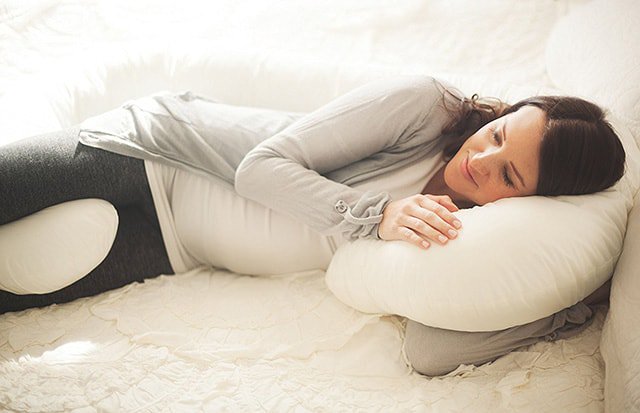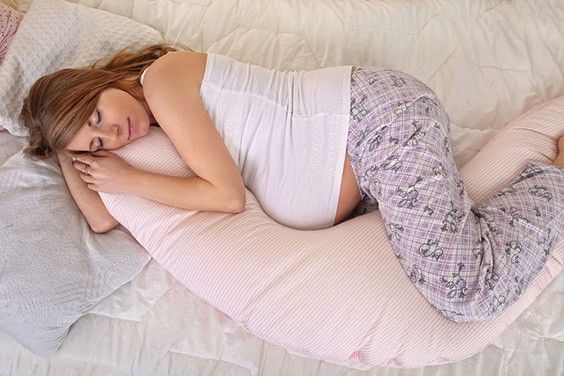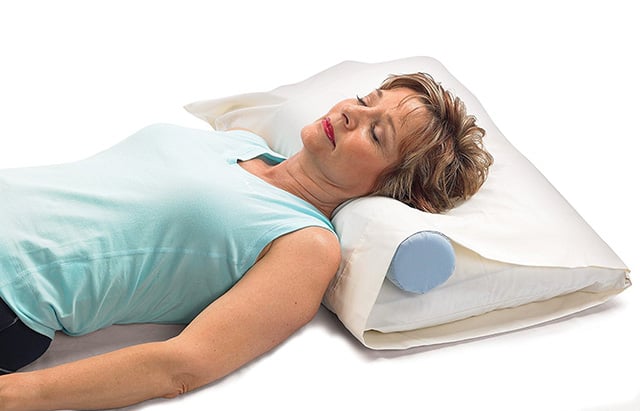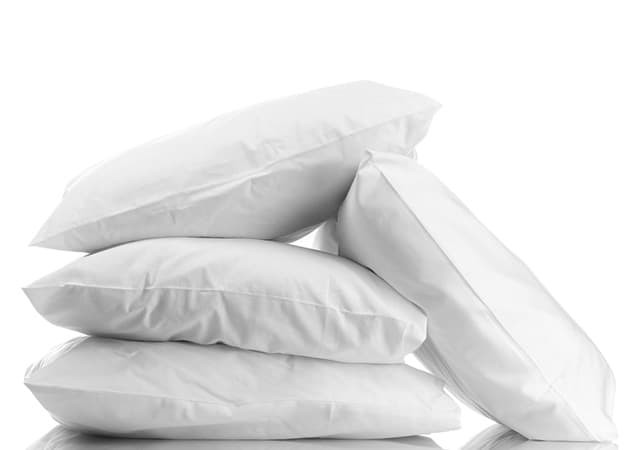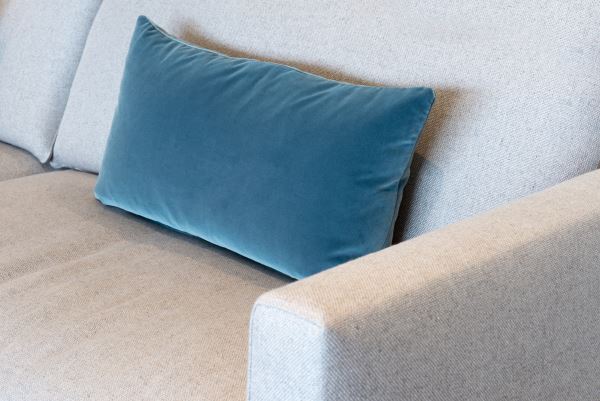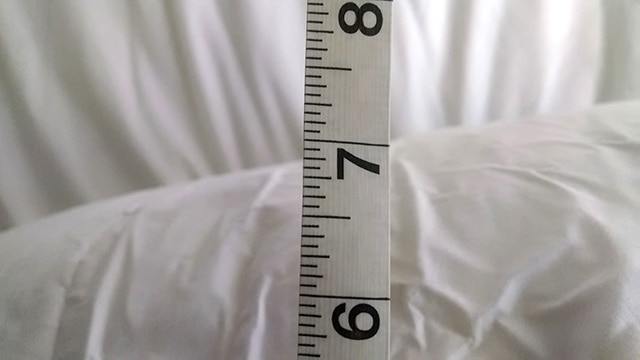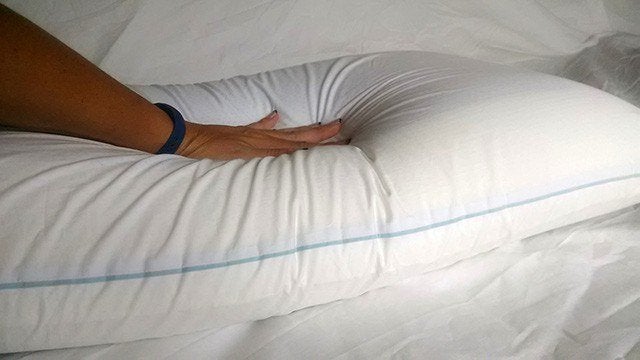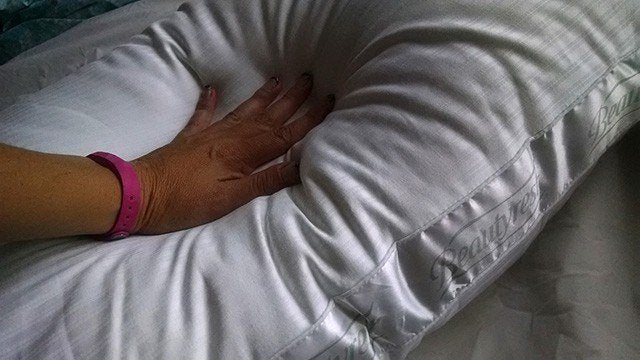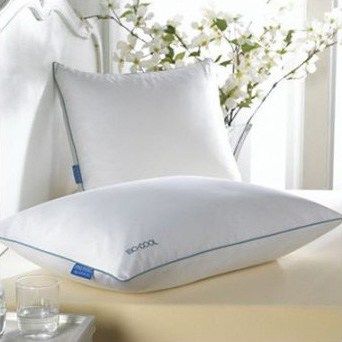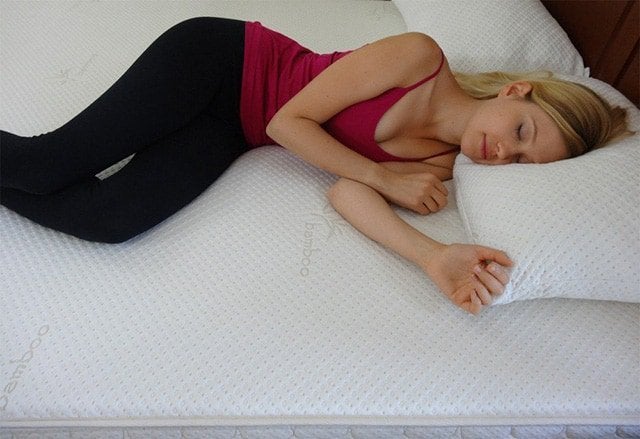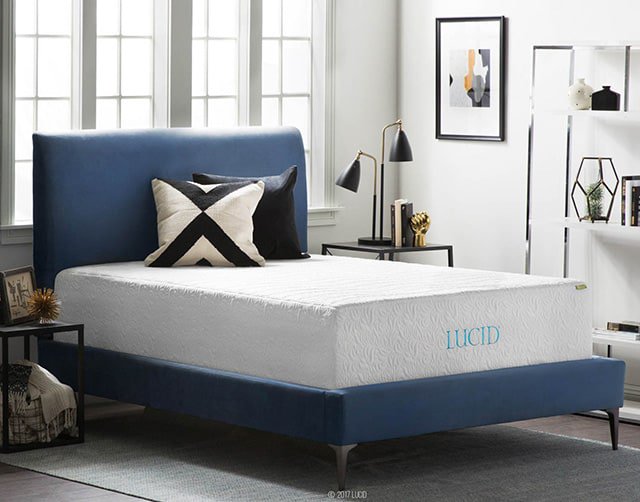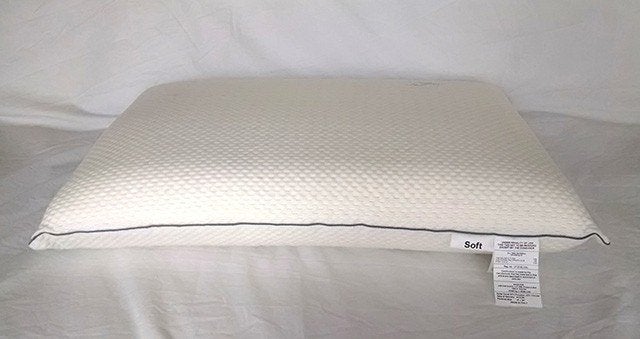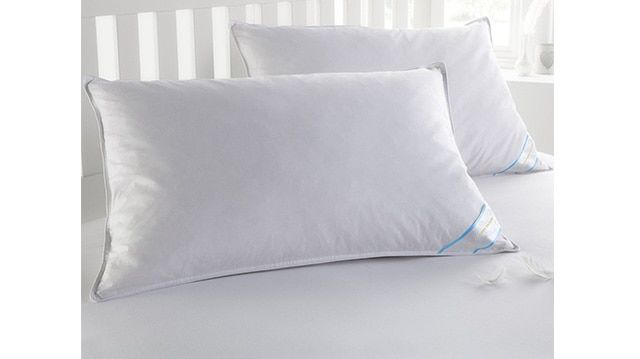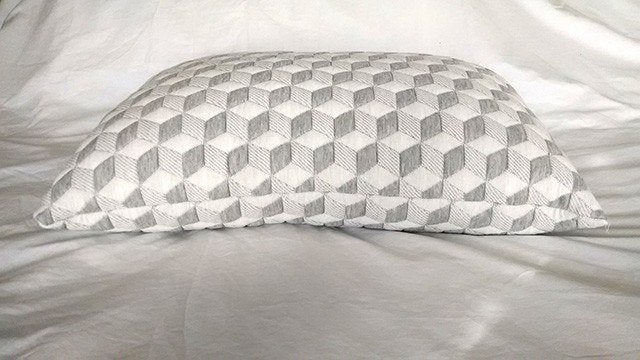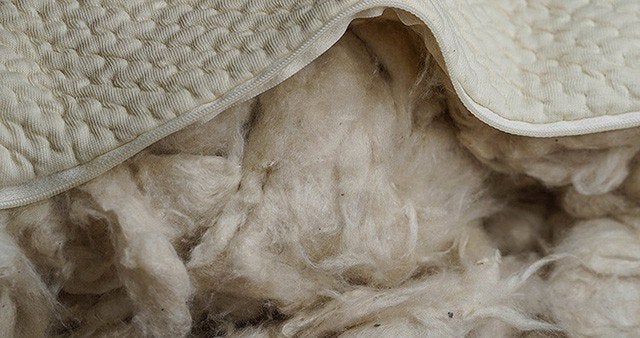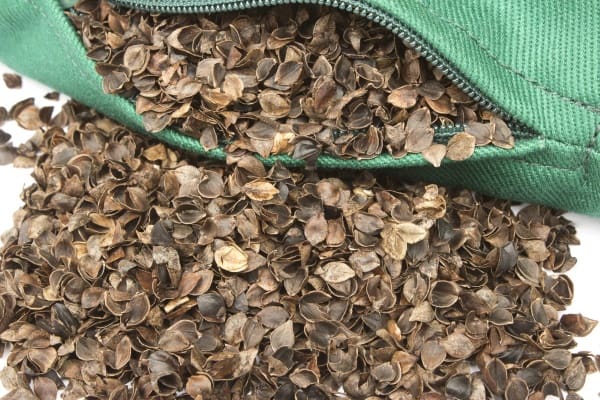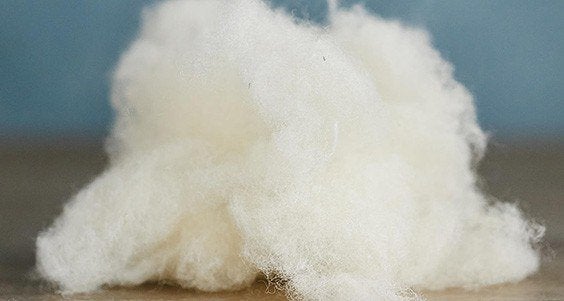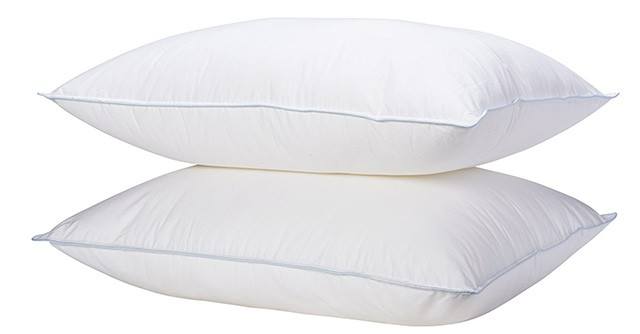Choosing the right pillow for your comfort is actually almost as important as your mattress choice. Pillows help support your head and neck in the proper position through the night to ensure a good night’s sleep. Since your cervical alignment is crucial to your overall health, the attention you pay to what you rest your head upon shouldn’t be taken lightly.
Your overall health is very closely tied to the amount and quality of sleep you get each night. Choosing a pillow based on store availability is a bad decision.
It is easy to get slightly confused when on the hunt for the perfect pillow, especially when you are faced with the many different pillow sizes and dimensions available. Below we’ve outlined what these common pillow sizes are in order to help you make an informed decision over what you may personally need.
Pillow Length and Width Explained
Although many companies may offer various pillow sizes, there is a standard acceptable size used within the sleep industry to help guide consumers in their search for the perfect pillow. Pillowcases also follow these general guidelines in order to provide a product that is an acceptable fit to the pillows you purchase.
The most commonly found pillow sizes are explained below, both for sleeping, as well as for decor. It is important to understand how these sizes can affect your sleep comfort as “bigger” is not necessarily “better”. Many people buy pillows based upon their bed sizes, but what they need to pay attention to is how those pillow sizes may influence their posture through the night. A pillow that is too narrow may not allow enough room for combination sleepers who are prone to movement, and too wide a pillow may have too much material for a narrowly shouldered sleeper.
You may want to read: Types of Pillows:Your Guide to Pillow Comfort
— Standard
The standard pillow size is one of the most common sizes found for a large percentage of sleepers. It measures 20 x 26 inches and is considered a fairly acceptable fit for everything from children to larger bodied sleepers as long as they are not too broad of shoulder. These are easily used in a standard or queen sized pillowcase without compromising the comfort of the pillow.
— Super Standard
Super standards are a more specialized size and measure 20 x 28 inches. These are a good choice for combination sleepers as the extra width provides more support. They also fit very well across single and twin sized beds to keep from creating a gap for a child to roll into. Because of this, they are a favorite for bunk beds that have a lifted side frame. These also fit a standard and queen size pillowcase well.
— Queen
Queen size and standard size pillows are often used synonymously with one another despite the fact that a queen size measures 20 x 30 inches- a full 4 inches longer. These still fit well within a standard size pillowcase as well, although depending on the loft (to be explained) it may make it feel a bit firmer.
— King
The king size pillow is by far the largest common pillow offered. Measuring 20 x 36 inches, they are generally used on king-sized beds to fit across the width for decorative purposes or for broadly shouldered sleepers who need the extra support. They often have too much material for the average size body and can influence poor sleeping positions.
— Body
Body pillows are popular with side and stomach sleepers to aide in head, neck, hip, and leg support for full spinal alignment. They measure 20 x 54 inches in most cases and also double as a good way to raise a pillow height along the top of your headboard.
— Neckroll
A neckroll pillow is more often seen as a decoration anymore, but they are, in fact, a pillow created to help support your neck correctly when sleeping on your back. At 6.5 x 13 inches, it is the perfect height and width to help fill the gap between your head and shoulders to allow proper rest of your soft tissues in your neck. It also is a helpful product to place under your knees.
— Japanese
The 14 x 20-inch measurement made popular by the Japanese pillow that fits well with a Japanese Futon bedding is a great choice for those who do not move much through the night. These measurements are also widely borrowed in one form or another for thinner, memory foam pillows specific for stomach or back sleepers.
— Travel/Child
A travel pillow is a generally used when the wrap around neck style pillows are not a personal favorite when flying long distances or when you want your own pillow in a hotel room. These pillows are a mere 11 x 16 inches and fold easily to fit within small carry-ons. They also are an excellent choice for children as they generally do not need a larger pillow for comfort through the night.
Decorative Pillow Sizes
Although decorative pillows are popular for showing off bedding, they can have a few helpful uses. Unfortunately, you won’t find them made in many choices of fill or material as they are not specific to body support or comfort, but they are worth understanding for when you see them mentioned.
European
European pillows are usually only for decorative purposes and measure approximately 25 x 25 inches- an obvious square shape. These can be an excellent choice for cushioning joints or providing hip and knee support when sleeping on your back or stomach if thin enough in nature.
Deco
Deco pillows are called such because they are used almost solely for decoration. These are square shaped pillows that can vary in size, but it’s usually no smaller than 16 x 16. They can be useful in bolstering up a pillow or for added joint relief between your knees or under hips through the night.
Boudoir
A boudoir pillow is only 12 x 16 inches and is just slightly larger than a travel pillow, except it is truly made specifically for decorative purposes or to help bolster up another pillow. Like many other decorative choices, they do serve in other capacities and can be helpful in relieving joint pain or supporting other body parts.
Pillow Height Explained
The height of your pillow, otherwise called as pillow loft, is measured when your pillow is at rest upon a flat surface. Loft can be sometimes mistakenly assumed to influence the overall firmness or the softness level of your pillow- but more often than not, the loft is a simple reflection of the types of materials and construction used in the pillow itself.
A very common mistake is to assume that a pillow with a tall profile is a thick pillow, and you pass it by as a possible choice. It is also common to assume that a thin pillow is soft or unsupportive. This truly couldn’t be further from the truth, and you shouldn’t ever pass up a pillow based on lift measurement alone.
Pillow Fill and Loft Relationship
As mentioned, the fill of a pillow can be extremely influential upon its loft. Certain materials are airier than others, and in small amounts, it can fill larger spaces than a more dense filling. The popular fills found below are explained in detail along with how likely they are to influence the height measurement of the pillow you are researching.
Polyfill
Polyester fiberfill is a man-made synthetic that is made into fine, durable fibrous strands that hold up well under pressure. Not only do they return to shape very well after compression, but they can be used in a variety of ways to create variable comforts. When fine strands are used as a filling, they allow a lot of air to fill the spaces in-between making them look more airy and lofty than they actually are. The more it is used, it will create a firmer surface but not necessarily change the height of the pillow.
They also can be slightly woven together to create more of a mat-like filling that gives to pressure without sacrificing support. When used in this manner, the amount used is usually directly related to the height of the pillow.
Micro-bead
Think of micro-beads as a bean bag for your head. The tiny unexpanded polystyrene beads or EPS contour to the weight that is placed on it and keeps a firm feel. The loft of these pillows is generally true to size, even underweight, making their dimensions a true measurement.
Memory Foam
Memory foam is a synthetic, visco-elastic product with a dense structure. Although it contours to provide pressure point relief, the overall support is fairly firm in nature and keeps its shape well. Because of the nature of more firm products, the dimensions are a fairly true measurement.
Shredded Memory Foam
Shredded memory foam pillows have become a very popular product over the last few years due to their ability to be adjusted. The shredded foam is occasionally mixed with a polyfill as well to adjust for softness level and almost always exclusively allow access to the filling to add or remove what you need for personal comfort needs.
Because there is quite a bit of air held between these shreds, they can be plumped up quite high. Therefore, the loft of these pillows is not always indicative of comfort and should not serve as a true measurement since what is being measured may be air.
Latex
Like memory foam, latex is a more dense material with very little air held within the cellular structure. Although very giving, it holds weight and shapes well without overly compressing which makes it an ideal material to use for sleep comfort. Because of its construction, measurements are usually a true indication of dimension.
Innerspring
Hybrid innerspring pillows actually are a thing. Think of it as a mattress for your head that uses pocketed coils to provide contouring and support to the weight of your head and neck. Although these coils may only be a few inches in height, they are encased within other various materials (usually memory foam) to provide a comforting sleep surface.
They do influence the overall shape of the pillow, however, making the dimensions a true indication of height.
Feather
Waterfowl feathers are a popular pillow fill that dates back thousands of years. They are strong, airy, and are able to be shaped and compressed- but easily plump back up. Most feathers that are used in this manner are a micro-feather and are small to keep from creating too much texture.
Due to the amount of air both within the hollow shafts of the feathers as well as what surrounds them, pillows can be plumped up much higher than what the filling amount suggests. These may be lofty looking pillows, but under compression, it will provide a softer, more shapeable sleeping surface.
Down
Down is the soft underlayment of waterfowl to help provide extra warmth and protection. It is very fine and is often used with a mix of feathers to create an extra soft, malleable pillow sleeping surface. Like feathers, they hold their shape well and are easy to plump up to high lofts but do not provide much support overall (hence why they are usually used in a blend). Measurements do not always provide true dimensions.
Kapok
Kapok is a soft, airy fiber found in the pods of the Kapok tree. Similar to cotton and stronger than wool, it is a fiber often used in blends to provide a faux down pillow feel or to soften a shredded memory foam pillow.
Like a polyfill or feather fill, the amount within can dictate weight and height, but because of its airy nature, the height may not be a true measurement since it will plump higher than it suggests.
Buckwheat Hulls
Buckwheat hulls are an increasingly popular pillow filldespite the adjustment period often needed to get used to the unique feel. These hulls contour to your head and neck and provide a firm support that is considered a great way to relieve headaches and migraines. Since they have some heft to them and do not really ‘plump’, the measurements of the pillows are true dimensions.
Most pillows that use this type of fill are adjustable, however- meaning that the loft may also be variable depending on personal preference.
Wool
Wool is an all natural, highly breathable fiber that may be used as a stand-alone or blended fill in specialized pillows. Similar to polyfill, the amount used dictates firmness levels, but it can also be plumped up as air fills the spaces between the fibers. Because of this, the loft is not always a true indication of pillow size and comfort.
Water
Like wool, water is often only found in specialized pillows. Because of how it is contained, it is almost always adjustable to control the height of your pillow to fill various sleep position needs. It is also a true dimension size.
Conclusion
Your choice of pillow is a crucial element to your overall body support through the night. Taking the time to really understand and research what you personally need as well as what shapes and sizes of pillows truly aide in your needs is well worth your time. Always buy pillow sizes based on your body size and be sure to understand where your height measurements are coming from with regards to comfort levels- especially since your choice of fill may drastically change what you see and what you feel.
If you have any questions or comments you’d like to share, please do so below so we can get back to you. And please share if you found this article helpful.
You may be interested in: Understanding and Combating Pressure Ulcers

